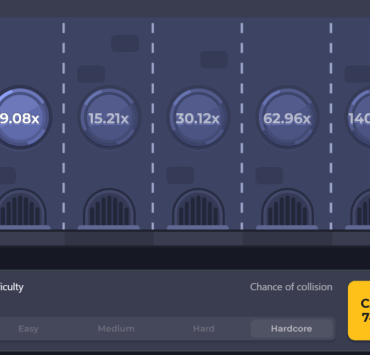Consulting experts Bain & Company recently released a survey of over 5,000 gamers worldwide, revealing just how far the industry has progressed.
Games have evolved from products that allow people to play and compete, into platforms where users can create, share and discover experiences.
Table of Contents
ToggleFurther Growth is on the Cards
The global gaming market is now a $219 billion behemoth, and it is expected to grow at a rate of four percent annually, until 2028.
The industry is being driven by three powerful forces – user-generated content (UGC), influencer-driven discovery and the expansion of intellectual property (IP) across multiple media formats.
The traditional AAA studios continue to struggle with ballooning costs and tighter margins, allowing games that focus on community and creativity to become the centre of the gaming space.
Bain’s head of Media & Entertainment, Daniel Hong, described this shift as a generational one. He believes that most successful titles around now are not just about gameplay.
Hong said: “Studios that embrace this broader role will lead the next era of gaming, and those that don’t will be left behind.”
Games as Platforms Reshape the Ecosystem
The games-as-a-platform model is thriving. These titles aren’t just about enthralling storylines. They offer limitless, open-ended worlds, where players, creators and even brands interact.
Many of these games are recording active user growth of 10% to 20% annually. The numbers show they are excelling at keeping players engaged and their communities boisterous.
Meanwhile, traditional AAA studios are struggling to keep up in this new terrain. Their development budgets are rising uncontrollably, and the returns are not matching the hundreds of millions that investors are pouring in because of how saturated the market has become.
Even the independent developers have adapted, thanks to their lean operations and experimental style. Their PC revenue has grown at a 22% compound annual growth rate between 2018 and 2024, outpacing the 8% compound annual growth rate (CAGR) posted by bigger rivals.
User-Generated Content Drives Engagement
UGC is now one of the most potent growth cells in the gaming industry. The Bain survey revealed that nearly half of creators are spending more time creating gaming content than they did last year.

Even the older gamers are joining in the trend. Per the survey, many gamers aged over 35 reported that they were participating in content creation.
However, younger gamers are really pushing the numbers up. They are more likely to engage with games their peers are playing, creating an interesting flywheel effect.
When players create new content, it fosters community growth and games continue to permeate the industry long after their launch.
Partner at Bain, Anders Christofferson, said: “Young gamers are driving the success of top games, and their values are reshaping the industry.
“Customisation, social connection and creativity now rank higher than visual fidelity for many players. The old formula of better graphics and sequels is no longer enough.”
The Middle East as an Emerging Gaming Hub
North America, Europe and Asia have been the traditional superpowers of the gaming market, but the Middle East is now providing stern competition.
The region has a young populace, and its smartphone penetration rates are some of the most impressive around. It is a cultural export and a diversification route as they seek to pivot away from their reliance on crude oil.
Experts are also predicting the Middle East will tap into the associated iGaming sector. Players across the region are already using review websites to find Arabic online casino platforms.
The expectation is that governments will soon tire of losing out on tax revenue and regulate the industry to reroute it to their coffers.
A land-based casino is currently being built in the United Arab Emirates (UAE), laying the foundations for the online scene to flourish.
Saudi Arabia’s Public Investment Fund (PIF) has shelled out massive sums to buy stakes in recognised gaming companies, and the UAE has created dedicated sports and gaming free zones to draw developers and publishers.
The Middle East is muscling its way into the picture, and with its investment in local talent and gaming infrastructure, the region can emerge as another major player in the industry.
Distribution Gilts Toward Direct-to-Consumer
Bain’s research disclosed that almost one quarter of players now discover new titles through online content creators and influencers. Social media accounts for 14% while 12% rely on digital stores.
In response to these developments, some developers are bypassing traditional stores such as Apple’s App Store or Google Play to build their own unique storefronts for their products.
Intriguingly, the shares of the top-grossing mobile games that have their own direct-to-consumer stores have risen from only 12% in 2019 to 44% in 2024.
Legal rulings in the United States, Europe and South America now prevent app stores from blocking external links, further weakening the grip of traditional distribution channels.






